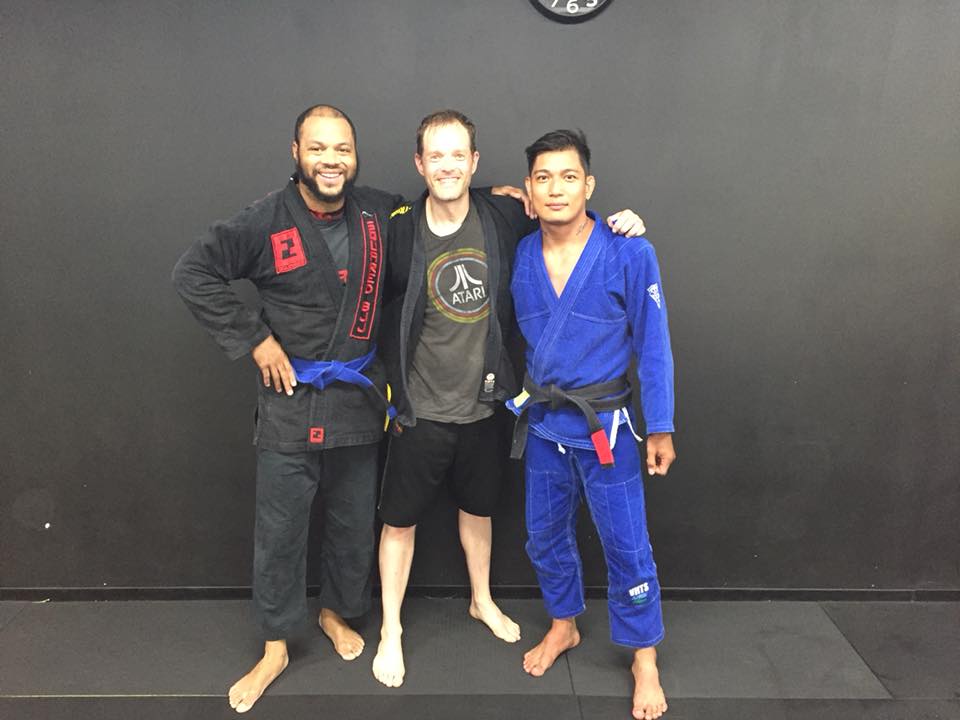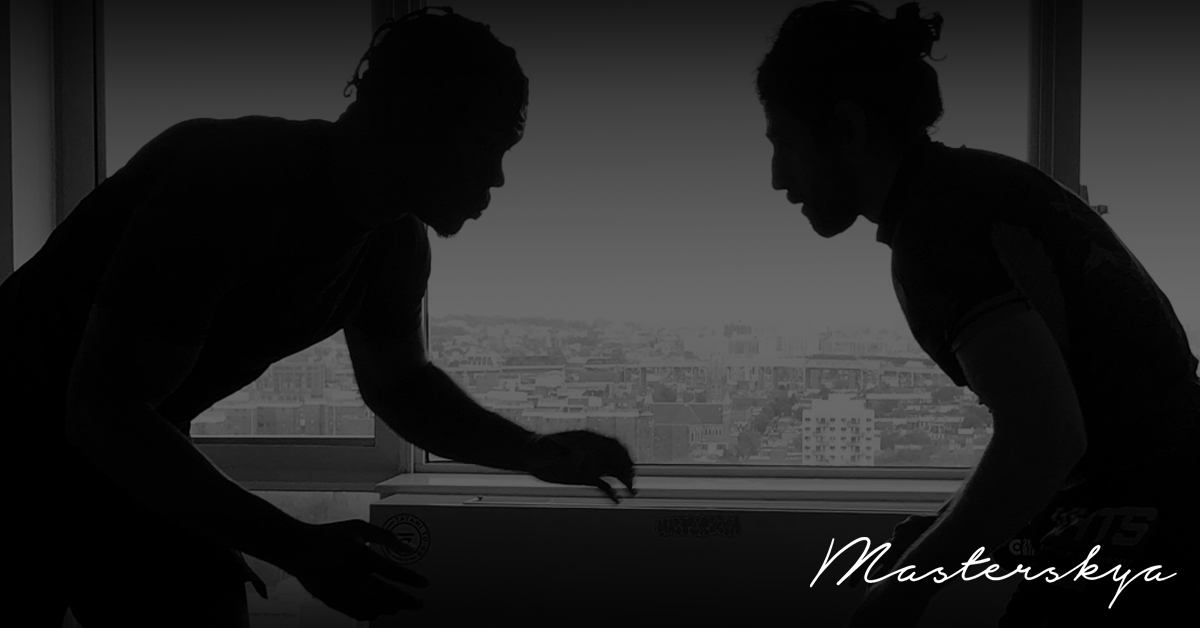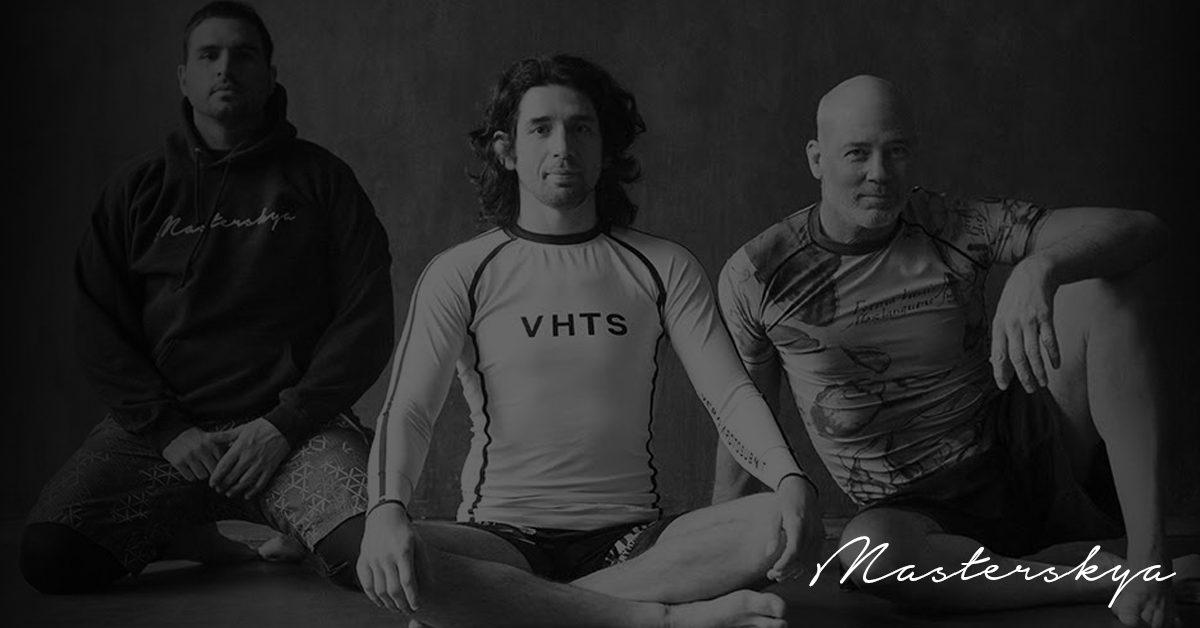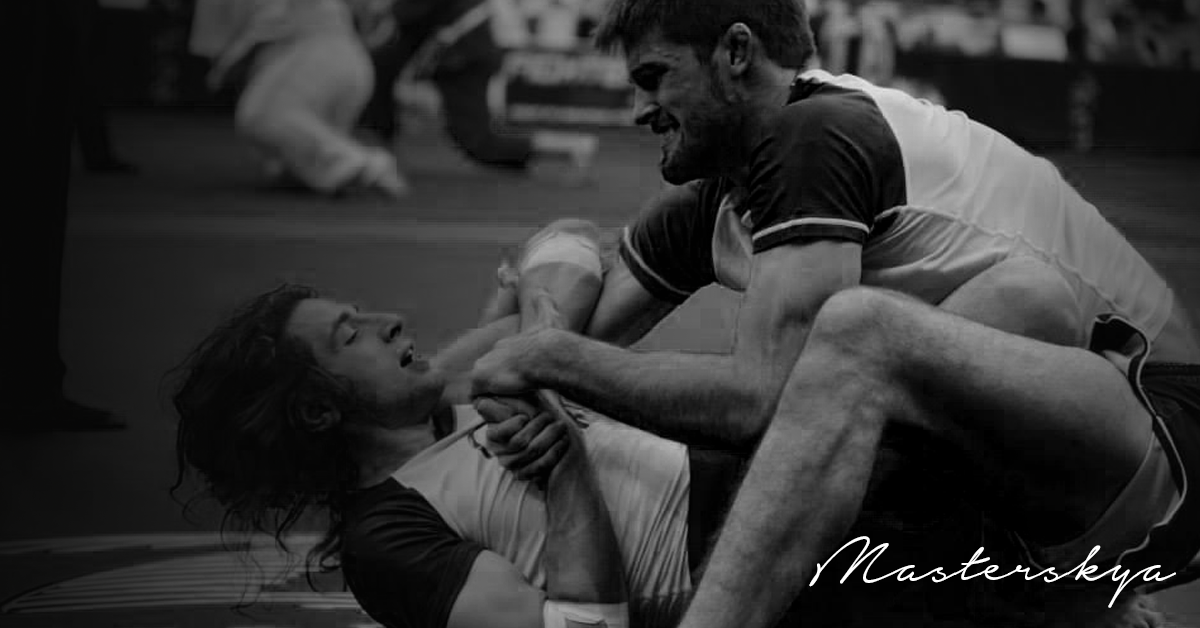The cross choke is a beautiful submission. A man can still fight with a broken arm or leg, but when his entire existence is threatened, that brings about a certain level of panic that, under the proper circumstances, makes the submission inevitable.
It’s less about doing the choke the “right” way and more about naturally letting, through a deep understanding of the working mechanics, the things that get in the way of successful execution fall by the wayside.
The Basics
A cross choke is successful when you apply enough pressure to both sides of your opponent’s neck to cut off the blood supply to their brain. They’ll either tap or pass out. This can be accomplished with multiple combinations of grips (you can also use different limbs and even your head).
However you achieve your objective is limited only by your own creativity and willingness to play.
When choking from the bottom, bring your opponent close to you. By breaking their posture, they become complicit in their own demise.
When choking from the top, make them carry as much of your weight as humanly possible while also maintaining your own base.
An effortless choke is executed not by the small muscles of the arms, but by the larger muscles of the back. By bringing your shoulder blades together and letting your chest rise, your arms will naturally come closer towards your body, naturally tightening the choke.
When setting up a choke, be open to the following (not an exhaustive list):
- How secure are my grips?
- Am I overreaching and making myself more vulnerable than necessary?
- Does my opponent perceive a threat?
- Is their base vulnerable to being manipulated?
- Can I shift my body to bring theirs into a more vulnerable position?
Things That Get in the Way of a Successful Cross Choke
If the wrist/lapel/limb isn’t pressed firmly against their neck, you’re more likely to get a fillet mignon at McDonalds than finish the choke.
If there is distance between you and your opponent when going for the finish, the likelihood of success decreases drastically.
Death gripping. By treating every grip like a fight for your life, you can burn your grip out too quickly. If you can’t secure your opponent, the choke is dead in the water.
A perfect choke comes on extremely quickly, but a good choke still gets the job done even if it takes a little longer. Don’t abandon a submission too early.
By failing to dominate and control your opponents posture, you give them room to escape. A perfect choke set up leaves with no other option other than getting choked.
Flaring the elbows. Just don’t do it. The closer you keep your elbows to your body, the better.
There’s nothing that I can truly teach you, so do with this what you will. If this inspires your own innate curiosity to explore and create, perfect. If it doesn’t appeal to you, that’s perfect, too.




